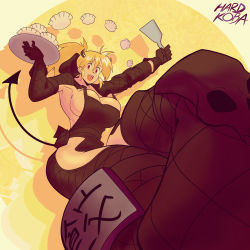Now Viewing: gyozaTag type: General Jiǎozi 餃子 or 饺子 (Chinese transliteration), gyōza (Japanese transliteration), Mo:Mo: or Momocha म:म: or ममचा (Nepali transliteration), or pot sticker is a Chinese dumpling widely spread to Japan, Eastern and Western Asia. Jiaozi typically consist of a ground meat and/or vegetable filling wrapped into a thinly rolled piece of dough, which is then sealed by pressing the edges together or by crimping. Jiaozi should not be confused with wonton: jiaozi have a thicker, chewier skin and a flatter, more oblate, double-saucer like shape (similar in shape to ravioli), and are usually eaten with a soy-vinegar dipping sauce (and/or hot chili sauce); while wontons have thinner skin, are sphere-shaped, and are usually served in broth. The dough for the jiaozi and wonton wrapper also consist of different ingredients. The Japanese word Gyōza (ギョーザ, ギョウザ) was derived from the reading of 餃子 in the Shandong Chinese dialect (giaozi) and is written using the same Chinese characters. The most prominent differences of Japanese-style gyōza from Chinese style jiaozi are the rich garlic flavor, which is less noticeable in the Chinese version, and the fact that Japanese gyōza are very lightly flavored with salt, soy, and that the gyōza wrappers are much thinner. They are usually served with soy-based tare sauce seasoned with rice vinegar and/or Rāyu (known as chili oil in English, làyóu (辣油) in China). The most common recipe found is a mixture of minced pork, cabbage, and Nira (Chinese chives), and sesame oil, and/or garlic, and/or ginger, which is then wrapped into thinly-rolled dough skins. In essence, gyōza are a cross between a pierogi and an egg roll. Other Wiki Information Last updated: 04/11/11 9:03 PM by jedi1357 This entry is not locked and you can edit it as you see fit. |
     |